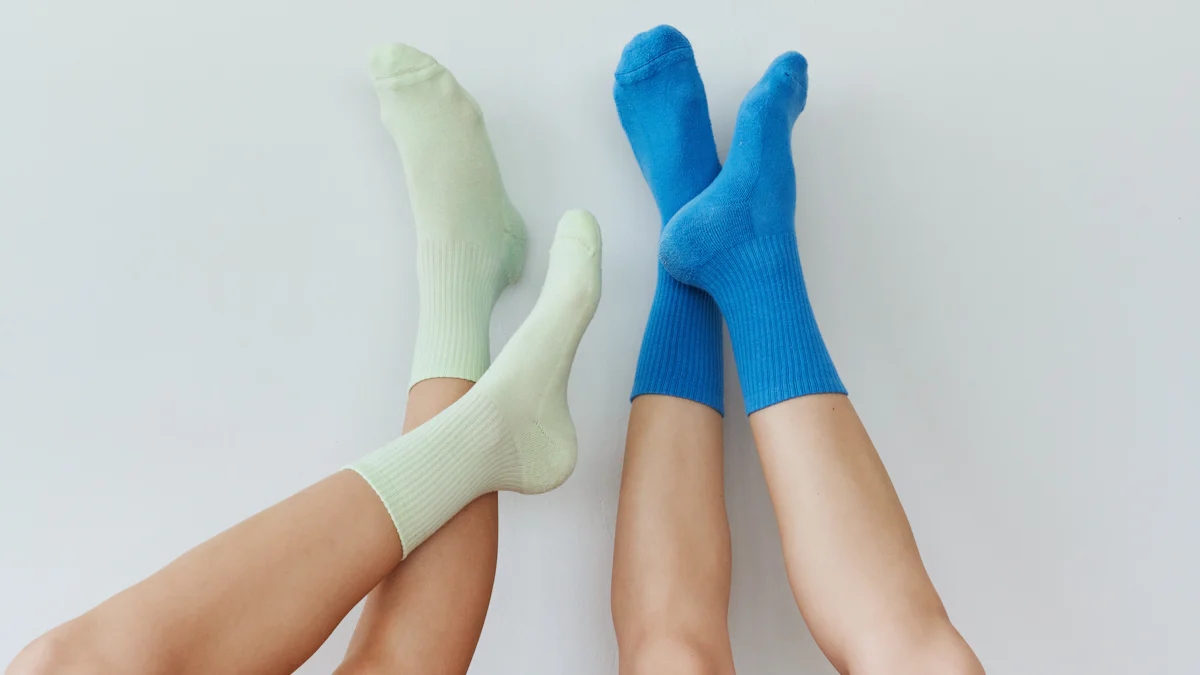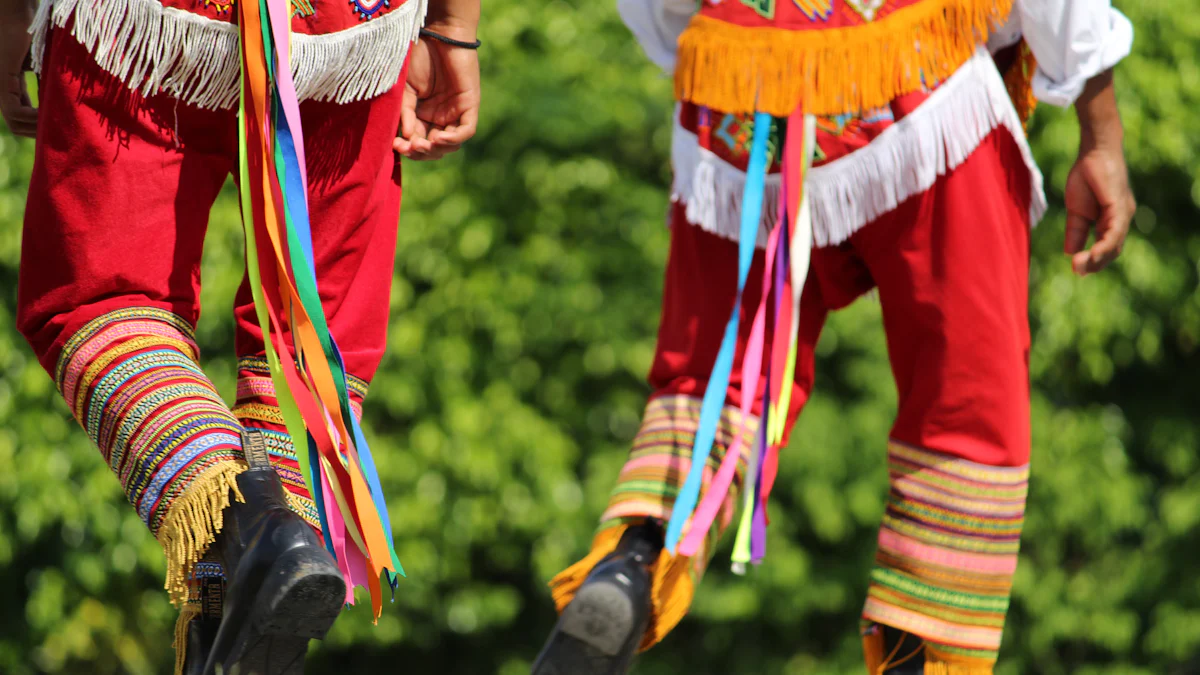
Comfort in socks matters a lot. Feet need support and cushioning throughout the day. Flat socks and traditional socks both aim to provide this comfort. Flat socks offer a unique, no-show design that fits various types of shoes. Traditional socks come in many lengths and styles. This blog will compare the comfort levels of flat socks and traditional socks.
Understanding Flat Socks

Design and Material
No-show Design
Flat socks feature a no-show design that keeps them hidden inside shoes. This design allows shoes to take center stage without any visible sock lines. Many people prefer flat socks for this reason, especially when wearing low-cut shoes or sneakers.
Common Materials Used
Flat socks often use high-quality materials such as cotton, polyester, and spandex. These materials provide a soft, cushioned feel while ensuring durability. Some flat socks also include moisture-wicking properties to keep feet dry and comfortable throughout the day.
Benefits of Flat Socks
Comfort and Fit
Flat socks offer exceptional comfort due to their cushioned design. The materials used help in providing a snug fit that adapts to the shape of the foot. This adaptability reduces the chances of blisters and discomfort. Flat socks can be trimmed to fit perfectly, adding to their appeal.
Versatility in Footwear
Flat socks work well with various types of footwear. From casual sneakers to formal shoes, flat socks remain hidden while offering the necessary comfort. This versatility makes them a popular choice for many different occasions and outfits.
Drawbacks of Flat Socks
Durability Concerns
One downside of flat socks is their durability. Frequent use and washing can lead to wear and tear. The thin design, while comfortable, may not last as long as traditional socks. Users may need to replace flat socks more often.
Limited Styles
Flat socks come in limited styles compared to traditional socks. While they offer various colors and patterns, the no-show design restricts the range of options. People looking for more variety might find traditional socks more appealing.
Understanding Traditional Socks

Design and Material
Various Lengths and Styles
Traditional socks come in many lengths and styles. Options include ankle, crew, knee-high, and more. Each length serves a different purpose. Ankle socks work well for casual wear. Crew socks fit perfectly with boots. Knee-high socks provide extra warmth in cold weather.
Common Materials Used
Manufacturers use a variety of materials to make traditional socks. Common choices include cotton, wool, and synthetic blends. Cotton offers breathability and softness. Wool provides warmth and moisture-wicking properties. Synthetic blends add durability and elasticity.
Benefits of Traditional Socks
Comfort and Fit
Traditional socks offer excellent comfort and fit. Wool socks, for example, provide natural elasticity. This keeps the socks snug and in place all day. Cotton socks feel soft against the skin. Both options help prevent blisters and discomfort.
Variety and Availability
Traditional socks come in a wide range of styles and colors. This makes them easy to match with any outfit. From formal attire to athletic wear, there is a sock for every occasion. Many stores carry a large selection, making them easy to find.
Drawbacks of Traditional Socks
Visibility with Certain Footwear
Traditional socks often show when worn with low-cut shoes. This can ruin the look of an outfit. Flat socks solve this problem by staying hidden.
Potential for Overheating
Traditional socks can cause feet to overheat. Wool socks, while warm, may become too hot in warmer weather. Cotton socks absorb moisture but do not wick it away as effectively as synthetic materials. This can lead to sweaty feet and discomfort.
Comparative Analysis
Comfort in Different Situations
Daily Wear
Flat socks provide excellent comfort for daily wear. The no-show design keeps the socks hidden while offering a snug fit. The materials used in flat socks, such as cotton and polyester, ensure a cushioned feel. This makes flat socks ideal for casual shoes and low-cut sneakers. Traditional socks also offer comfort but may show with certain footwear. The variety in lengths and styles of traditional socks can suit different daily activities.
Athletic Activities
Flat socks excel in athletic activities due to their moisture-wicking properties. These socks keep feet dry during intense workouts. The no-slip grip ensures that flat socks stay in place, preventing blisters. Traditional socks, especially those made from synthetic blends, also perform well in sports. However, traditional socks may cause overheating during prolonged activities. Flat socks provide a cooler alternative for athletes.
Durability and Longevity
Material Strength
Flat socks use materials like spandex and polyester to enhance durability. Despite this, frequent washing can lead to wear and tear. Traditional socks, particularly those made from wool or synthetic blends, offer better material strength. Wool socks resist wear and tear more effectively than flat socks. Cotton socks, while comfortable, may not last as long as synthetic options.
Wear and Tear
Flat socks face durability concerns due to their thin design. Regular use can cause flat socks to lose their shape and cushioning. Traditional socks, on the other hand, often withstand wear and tear better. The thicker fabric in traditional socks provides more resilience. Users may find that traditional socks last longer than flat socks.
Style and Aesthetics
Fashion Trends
Flat socks align well with current fashion trends. The no-show design allows shoes to stand out without visible sock lines. This makes flat socks popular among fashion-conscious individuals. Traditional socks, however, offer a wider range of styles and colors. From patterned crew socks to colorful ankle socks, traditional options cater to various fashion tastes.
Personal Preferences
Personal preferences play a significant role in choosing between flat socks and traditional socks. Some people prefer the hidden look of flat socks. Others enjoy the variety and visibility of traditional socks. Flat socks offer a sleek, minimalist appearance. Traditional socks provide more opportunities for self-expression through different designs.
Flat socks and traditional socks each offer unique benefits. Flat socks provide a no-show design, comfort, and versatility. Traditional socks offer variety, durability, and warmth.
Final Thoughts: Flat socks excel in comfort and fit for various footwear. Traditional socks shine in durability and style options.
Consider Personal Needs: Readers should consider their daily activities and footwear preferences. Some may prefer the sleek look of flat socks. Others might value the durability and variety of traditional socks. Choose based on what suits your lifestyle best.

